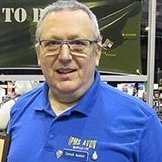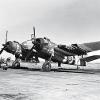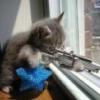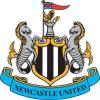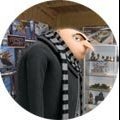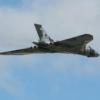Search the Community
Showing results for tags 'conversion'.
-
I shall be joining with the venerable Catalina. Starting with the Academy 1/72 PBY-5A kit I will add the Red Roo PB2B-2 conversion. I would have preferred to start with a PBY-5 kit but the 5A is all that is around and easy to find these days in the LHS They come with locally added RAAF decals, though I will not be using them. The Red Roo conversion includes the resin parts to make a wartime or civil PB2B-2 and the set I have includes decals for an 11SQN RAAF machine among others. Though since it also has the parts for a civil aircraft I could be tempted to build a QANTAS one! Perhaps I could do both as I have another PBY-5A kit and conversion in stash
- 85 replies
-
- 15
-

-

-
- Conversion
- Red Roo
-
(and 1 more)
Tagged with:
-
This is a conversion of the IBG Bedford QLD to a twin boon refueller. The cab, chassis and running gear are from the donar kit whilst the majority of the refueller parts have been 3d printed, the finer detail was then added with scratch building.
-
Alright, after a protracted build, here she is: Comments welcome! Mike.
- 10 replies
-
- 10
-

-
Hi all, I am looking to build one of the three sea gladiators that was involved with the defence of Malta, I have looked at multiple reference photos and they have three bladed props rather than the two bladed prop seen in the Airfix kit. They also have arrestor hooks but I am not sure these were present of the Malta gladiators, If I can get any info on a conversion set or something similar that would be greatly appreciated. -Cam
- 28 replies
-
This model has been a long drawn out WIP over there as http://www.britmodeller.com/forums/index.php?/topic/235008954-navy-ation-wasp-the-last-post/ for a long time I had encouragement from many of our friends, not only those of a nautical bent I add, and had a very enjoyable journey through the possible, the feasible and the down-right inadvisable I have wanted a Wasp in my collection for a long time, the last time I had one Alan Hall was still in the business of entertaining us with his Airfix Magazine, long before this conversion raised its exciting little head again in Aviation News I would have bought the long awaited Freightdog model but Colin's difficulty with some aspects of production and my advancing years made me jump the gun with a refined version of the old Airfix mag favourite (I am old you know!) So with the timely gift of an Airfix Scout AH1 kit that had no transparencies to get me on the road here is my Wasp to inspect That is the lot, hope you like her I had lots of fun, quite a bit of blearghh and some moments of "lend me your towel I want to chuck it in the ring!" This is the moment after a long drawn out build that the missing kit comes out at last, I say bring it on please Colin Or even Airfix, are you watching the Britmodeller site? Thanks for looking
-
Here a couple images of the British Heinkel, converted from the ICM kit changing the nose and altering other parts, plus some additions. A previous post on the same matter was excised since it contained a link, which seems that is not appropriate in certain cases. Hope this unusual version of the "good" Heinkel entices some modelers to attempt this kind of conversion. Three things differentiated the "British" Heinkel He-70 from the original one: 1) A different nose with a different engine 2) The covers of the retractable landing gear are partially different 3) It didn't belong to the freaking dumbhead nazis Different accounts exist on the details and development of the acquisition by England in 1936 of a He-70 passenger plane, before all hell broke loose a few years later. You can find the stories with the browser of your preference. The fact is that England acquired a He-70 but had to send a Rolls-Royce Kestrel to be installed on it in origin as the builders -predictably- refused to send their plane as it was to England (with its BMW engine) to be motorized there (they all felt the dark clouds already looming). This was no doubt a sort of intrigue gimmick, but the plane finally arrived to Croydon with a Kestrel -in route to Hucknall- with its British registrations. Long ago I used the old Matchbox/Revell kit to build the civil passenger version, but the sight of an ICM kit enticed me to build this unique machine, G-ADZF. Nice of ICM to release once in a while a civil plane. The kit, well-known by now, is a newer -and therefore better- kit than the venerable Matchbox/Revell rendition, but, as always, there is a little room for improvement. The lowest part of the wheels' retractable covers should be appended to the outer side of the wheel bay, instead of folding at 90 degrees of the leg cover as in the other machines. The new nose was obtained via a carved basswood master used to plunge vac shells on the Mattel Psychedelic machine. I got a resin Engines & Things Kestrel. The very good news: The ICM kit comes in very sturdy box with the addition of a lid cover. I do appreciate this kind of box since as we all know it protects the contents much better than the pre-crushed flimsy thin packaging used by some manufacturers. The molds as said are much better than the Matchbox/Revell old release, and include wonderful surface treatment as well as many detail parts. The engineering is innovative. The parts come separately bagged and the transparencies are clear and clean. The injected plastic is free of fuzz and flash and the sprue gates are reasonable small. Now the not-so-good news: The decals (that have small lettering rendered blotchy), for some reason I can't fathom, are absolutely dead matt in finish, whilst the real planes had a subtle shine clearly appreciated in photos. Not only that, but instead of printing the "thunderbolts" in their appropriate color, they are rendered as clear spaces amidst the black decals, that you somehow will have to match or mask in order to paint the surrounding nose black too. In my boxing the instructions unfortunately committed the silliness of using a faint and fuzzy gray scale for the drawings, that fuses the detail in an undifferentiated gray mass, and makes everything confusing, rendering most of the diagrams useless. Really, guys, don't you check your galley proofs? Summarizing: A welcome civil release, fairly priced, and exceptional kit, of innovative engineering, well packaged, with superb detail and moldings, BUT where all graphic components (instructions and decals) are barely useful. The model:
- 10 replies
-
- 21
-

-
In a thread on white Hampden torpedo-bombers, Jan Polc of AZ makes it clear that work is being done on this subject, and that this is so far advanced that the torpedo-bomber conversion will be a "cut here and add" conversion. We can of course dream of larger things, but he hasn't said that it will be any more than the conversion parts, or that it will be a 1/72 tooling for AZ, or any other scale for any other company, or given any idea of possible dates.
- 56 replies
-
- Hampden
- torpedo-bomber
-
(and 2 more)
Tagged with:
-
I am picking back up on this. It's a bagged Accurate Miniatures, old Monogram F-4C/D I am converting to a British F-4J. The kit comes with the parts to build an F-4C/D and stabs, burner cans, navalised cockpit to do an F-4J also. I simply added the hump on the wings for the larger wheels, sanded off the IR seeker and opened up the wells where the bridle for the launch cables hook to under the fuselage. I am searching for 74 Sq black tail air frame.---John OLYMPUS DIGITAL CAMERA by jvandeu53, on Flickr f4c to j 10 by jvandeu53, on Flickr OLYMPUS DIGITAL CAMERA by jvandeu53, on Flickr OLYMPUS DIGITAL CAMERA by jvandeu53, on Flickr OLYMPUS DIGITAL CAMERA by jvandeu53, on Flickr
-
Hello all, Well this is a bit of a return to old ways for me. It's been well over two years since I've found time in my life to even think about modelling...work and children will do that to you! The last time I tried to post a WIP on BM it was Italeri's 1/48 Tornado converted to a GR.4 which started in 2008 and didn't reach a conclusion in Ready for Inspection until 2012 so I don't have a good track record! However, in the hope that it may help spur me along a bit I figured why not post this on BM just to keep some pressure on myself! So my plan is to take the Airfix boxing of the Jaguar GR.3/ES in 1/48 scale (also recently re-released by Revell): Convert it to this aircraft which I was lucky enough to taxi a few times at Cosford a few years ago, using various bits and bobs plus plenty of scratch building: Then end up with something similar to this, as per the previously mentioned Tornado: Like the Tornado I have no plans to build it straight from the box. I hear on the grapevine that the newer Kittyhawk kit has its shape issues but stress I've not seen it in the flesh myself. Whatever the story there though, I've had this on the to-do list for a long time and, having built the Airfix Jag before, I know it's pretty good in terms of overall shape, if outdated in terms of surface detail. It's also cheap which makes it ideal for this sort of kit bashing and major surgery as if I screw it all up I'll not feel quite so bad! So this is going to be a full strip-down and rebuild to see what I can get out of a relatively old kit. See you at the other end...in 2019! Andy -------------------------------------------------------------------------------------------------------------------------- EDITED: Added on 8 Jan 2016 for anyone building a Jag at the same time as this one: JAGUAR REFERENCES Useful websites: SEPECAT Jaguar in Detail Prime Portal - Jaguar GR.3/3A Prime Portal - Jaguar GR.3/3A Britmodeller - Jaguar GR.3/3A Useful build threads: Deanflyer's Jaguar GR.1 (A very nice build of the Airfix kit) Neil's Jaguar T.4 (A beautiful full Paragon conversion - his own - of the Airfix kit) RMP2's Jaguar GR.1 (A very good dual build of a Phantom and the Kittyhawk Jag which contains some useful comparisons with the Airfix version) palacefan's Jaguar NS (The Airfix kit built as a Nigerian Jaguar International export, showing an alternative way to fit the Paragon flaps) Mike's Jaguar GR.1 (The Airfix kit built very well with some lovely modifications made where needed) Muzz's Jaguar GR.3 (A nice build of the ARTF snow scheme with some Paragon extras) Piero's Jaguar GR.3 (As always, Piero's build are a cut above with plenty of detail) Useful books: SEPECAT Jaguar GR.Mk.1 - Aeroguide 2 Jaguars 1973-2007 - Royal Air Force Jaguar A/B/GR.1/GR.3 - HT Model Jaguar Squadrons - AD HOC Jaguar - Aeroplane Illustrated SEPECAT Jaguar - Pen & Sword The RAF Jaguar - Patrick Watson Big Cat Diary - Wg Cdr John Sullivan After-market Accessories Having decided to make this a dual build, I am planning to use a fair number of accessories so list them here to help anyone else who may wonder what's out there... GR.3/3A NeOmega Resin 1/48 Jaguar GR.3 cockpit set - This will require further conversion to change the 12.5cm x 12.5cm (1:1) LCD Multi-Function Display of the Jaguar GR.3 (Jaguar 96) to the 15cm x 20cm Active Matrix Liquid Crystal Display (AMLCD) of the GR.3A (Jaguar 97) as it is the later type I am building in this case. Note, Aires also do some decent avionics and cannon bays for the Jaguar but I've elected to scratch-build these. Worth also being aware that there are differences in the avionics bay between all marks of Jaguar. The separate gun barrels set is, I believe, only useful for French Jaguars. T.4 Paragon Designs Jaguar T.2 conversion set (4895) - A resin replacement for the forward fuselage which is sadly out of production and hard to find now. Both Aires 1/48 Jaguar Wheel Bays (4595) - An excellent resin detail set which, along with the air brake interior set, is capable of fitting the Airfix kit quite nicely; despite being marketed as serving the Kittyhawk Jaguar. Aires 1/48 Jaguar Speed Brakes (4606) - Another top quality set which is designed for the Kittyhawk Jaguar but can be made to fit the Airfix kit very well too, even when used in conjunction with the resin undercarriage bays. Only one small snag in that the pressure refuelling receptacle in the starboard bay is moulded too small. Not a great drama if you're happy to live with it. Master 1/48 Jaguar Pitot Tube & Angle of Attack Probe (AM-48-057) - A high quality turned-brass reproduction of the Jaguar's pitot tube plus AoA vane. The pitot is a vast improvement over the chunky plastic or resin equivalents on the market. Quickboost 1/48 Jaguar A Correct Air Intakes (QB48 573) - An improvement set for the air conditioning pack atop the spine. Be aware that aerials for the Jaguar A are not necessarily suitable for the RAF models though. Scale Aircraft Conversions 1/48 Jaguar Undercarriage (48037) - A metal set of replacement oleos which are not only more detailed and crisp than the kit parts but, if you are adding a fair amount of resin and other details, will help support the weight.
- 182 replies
-
- 14
-

-
Hi, To complete my short story (or show) on Bulgarian AF during WWII the third and the last (as yet) of mine collections made in markings of Bulgarian AF. This is Avia B 135 - a Czech build fighter, produced already under German occupation. At present there is a nice model of this machine by RS....However, I made it several years ago, so I made as scratch conversion of Kovozavody Prostejov Avia B-35. The differences are in u/c, rear part of canopy and fuselage (wider in B 135), stright leading edge of wing in B135 (eliptic in B 35) and some small details. Regrads Jerzy-Wojtek
- 15 replies
-
- 16
-

-
- Avia B 135
- Bulgarian AF WWII
-
(and 1 more)
Tagged with:
-
Hi, Next from my deep archive - I made it in 1996. This is a scratch conversion of Frog Beaufighter Mk XXI into Mk II F. I used Airfix Lancaster "Merlin egg" (which left in drawer after doing my Manchester) and reshaped part of wings near engines, made a bit shorter nose and pilot canopy (this came as required from comparison of kit with plans), add radar antenas, made stabilizers not elevated, add home made rear canopy etc. Markings are from RAF Squadron 307 (Polish) Night Fighter, "Eagle Owls of Lvov" (in Polish "Lwowskich Puchaczy" - R2445 EW.A, spring 1942. And then, some years later the Hasegawa issued their kit smashing down all my efforts to have something special on my shelves.... That is brutal life. (Edit 21 Jul 2017 - not true, no Hasagawa Mk II!) Comments welcome Regards Jerzy-Wojtek Thank you for watching...
- 12 replies
-
- 19
-

-
- Bristol Beaufighter Mk II
- Frog
-
(and 1 more)
Tagged with:
-
Airbus A330-200 Gulf Air Reg A9C-KA - New Livery Concept! Kit - Revell Thai A330-300 1/144 scale Engines - Braz 2 x RR Trent 700 Decals - F-DCAL 787 Dreamliner Gulf Air This model started life a rather shabby Air Mauritius and this was the original conversion from the -300 to the -200. Engines were different again from the original kit. thanks for looking!
-
This was the first model i ever built (as an adult) about 3 years ago. The kit was the Revell Thai a330-300 kit and although my first model I wanted to do something different and convert it to the shorter 200. The fuselage pieces were cut out and the tail was removed (replaced with the slightly larger braz tail for the 200. Once I had decided on Air Mauritius I purchased the GE engines from Hannants (I still have the PW ones) I made a decent job of the modelling but after a while I realized that the paint job sucks - although initially it looked acceptable. The decals were my own and now look tired and faded. I also committed a faux pas and littered it with every transfer available (i probs only use 25% of the transfers now including the doors) I also did an awful job of the windows..... using clear glue to form a transparent window (what was I thinking). Time to restore and save this I reckon. paintwork is awful now. those windows will need filled You can make out the fuselage join from where its been shortened and put back together. I also wouldn't fancy the pilots to see much out the cockpit window the other fuselage join is visible and i also lost part of the undercarriage doors so theyll need scratch built from reference shots. also made a crude attempt to put this on a display stand - that'll need tidied up Stage 1 - remove paint work Im using brasso to thin the paint, its a bit time consuming but dont want to weaken the plastic below using paint stripper. Getting there anyway. Cockpit glass removed and some windows. There is glue residue in most of the windows that will take some effort to remove.
- 37 replies
-
- 3
-

-
- a330
- air mauritius
-
(and 1 more)
Tagged with:
-
On the 12th August 1941, a force of 70 bombers including 9 Manchesters with 6 from 207Sqn based at Waddington and the other three from 97Sqn took off on a deep penetration raid to Berlin. The Manchesters were carrying mixed loads. Some carried the 4000lb Cookie whilst the others carried 5 x 1000lb GP's. One of the aircraft L7380 (EM-W) which was later captured on film by the Germans having crash landed on sand banks in Holland had to turn back over the North sea due to poor performance and tail flutter. It landed successfully back at Waddington after dropping its bombs on the port at Emden. The other 8 continued on. Over Holland, L7306 of 97Sqn was attacked by a night fighter but successfully evaded it by taking cover in cloud. With all gunners on look out for further fighter activity, Mike Lewis flying L7422 (EM-V) was flying with another Manchester in front of him. Suddenly, he noticed tracer striking the Manchester. Immediately, there was a large pink flash, clear evidence that the Cookie had exploded disintegrating the aircraft. The remains were seen failing away in a shower of yellow flame as the fuel tanks exploded landing around Kolham. Mike Lewis learned that the Manchester was L7381 piloted by his good friend Mike Smith who was on his 50th mission. L7381 had been brought down at 01.25am by Oberleutnant Ludwig Becker flying a Do215 having been tracked by his Liechtenstein set. The remains of mike Smith were found in a ditch still strapped in his seat. The only consolation that could be taken is that the crew suffered an instant death. The crew were recovered and laid to rest in the cemetery near Hoofdweg at Kolham, but were subsequently relocated to the Canadian war cemetery at Holten. The build is the new Airfix Lancaster II with the Blackbird Manchester resin conversion. Having been inspired by the book 'Avro Manchester - The Legend Behind the Manchester' by Robert Kirby (where most of the research above was taken from), I wanted to do a tribute to one of the many tragic accounts covered in his book. I decided on L7381 that fitted the bill in that it had the wavy demarcation scheme and of course had the three tails of the early Mk.I. Part way in to the build, I decided to do a diorama that involved the 'fateful' cookie that led to the demise of Smiths crew that night. The engraved plate was picked up for a fine sum of £1.75 off Ebay which you can't grumble with. The ground equipment was taken from the Airfix Bomber Re-supply set. Whilst there are no known photo's of L7381, there are plenty of L7381 to which I used for reference. Robert Kirby introduced himself in the build thread and pointed out a mistake in the build in that I used the narrower 28' tailplanes where as all but the first 20 Manchesters used later 33' unit that was standard on the Lancaster except for the three tail configuration. Take note of this if you are thinking of building one, for me, they are too secure to think about changing, so I'm playing ignorant! I want to get some more ground crew, so will add them at a later date to the diorama, but for now want to clear the bench. I'm not going to go in to detail about the build as it's covered HERE, so I'll get on with the pictures. Thanks again, for all the people who have followed and contributed throughout the build Thanks for looking Neil
- 95 replies
-
- 132
-

-
Hi all! Where can I obtain the exhausts to convert Revell's P-70 Nighthawk to a Havoc II turbinlite? Thanks to a review on the Militarymodelling site, the sprues can be examined and there does not seem to be the porcupine type exhausts. In a seperate project, for conversion to the Havoc I turbinlite, all it appears to need are cylindrical exhausts, extended air intake, a reshaped vertical rudder and reshaped rear engine cowling. Is that correct? I'm hoping Revell might re-release it with RAF decals and appropiate parts. Thanks for considering my questions. M.M.
- 11 replies
-
- 1/72
- accessories
-
(and 1 more)
Tagged with:
-
I am posting these pictures following a request for them and information on the build in the WW1 aircraft section of this site. I am also including pictures of the scratch built Beardmore engine as this has featured as part of the discussion. There is a full build log for this model on Airfix Tribute Forum under conversion corner, and ww1aircraftmodels.com in the under construction section if anyone is interested. I have also included some notes on the type for those modellers who are not familiar with this aircraft. In the build logs referred to I used wings from the old Veeday BE 2c. This kit is a rare bird these days and anyway Airfix have now produced a first class model of this type and I would recommend it as the starting point for this conversion as the outer wing panels of the FE 2b and the BE 2c were the same. However the FE 2b had a greater span so I would either make new centre panels from card (as on my original conversion), or use pieces cut from a second Airfix BE 2c kit. The Lewis machine gun, wheels, struts and propellor could all be taken from the Aifix kit. The remaining parts would have to be scratch built as per the build log, unless that is you can find an Aeroclub Beardmore engine - another rare item these days. The FE 2b was designed and built at the Royal Aircraft Factory in 1915 in response to a request from the War Office for a "gun carrier" for armed reconniassance, escort and pursuit. The prototype flew in March 1915 buty problems in supplying engines meant that the first order for 12 machines was not completed until the autumn of that year. Later the type was only supplied slowly because of the shortage of engines. However it quickly proved to be superior to the Fokker monoplanes that were causing heavy casualties among the BE 2c reconnaissance squadrons, and the type helped to achieve air superiority (with the DH 2 and Nieuport 11) for the Allies during the summer of 1916. Even after the introduction of the early Albatros fighters in September 1916 the type could hold its own in the hands of a good crew: von Richtofen was famously hit by a bullet from his own side when he was involved in a dogfight with these machines, and German pilots Schaefer and Ulmer were shot down by gunners in this type. The problem for the RFC was that by 1917 the type was obsolete but was kept in service as an escort because there were no suitable replacements. After it had been withdrawn from daylight sorties it continued to be used as a night bomber until the end of the war. Early FE 2b's had a complicated oleo tricycle undercarriage: this was modified in the filed to a simpler V and later replaced on production machines by an even simpler V. The type was deployed against Zeppelins in the UK but its slow rate of climb and poor ceiling made it unsuitable in this role. In all over 2000 of the type were built and it served in a wide variety of roles. It has had a bad press in the past from those who looked at it from the comfort of armchairs and noted the high losses suffered in 1917 when the type should have been withdrawn. In reality it was a good design for its time being strong, relatively easy to fly, and able to compete well against contemporary types: its rapid obsolescence reflected the pressures of war, not the deficiencies of the design itself or the crews who operated it. I built the engine using card, rod and stretched sprue and based it on drawings in DataFile No 147 and photographs of the engine from Viling's WNW build on this site and the WNW website. I apologise for the small images but hopefully they will be useful to others. This is the engine from the right side: This is the engine from the left side: These photos show the engine installed in the nacelle before I put the top wing on to the model. All markings except the serial were hand painted and the model is rigged with 40 SWG rolled copper wire. It represents an early machine operated by 11 Squadron RFC at Isel-le-Hameau in September 1916. P
-
Hi Folks Just been having a look at an Airfix Seafire FR.46/47 kit I picked up second hand and wondered whether I could build it as a Mk.22 Spitfire. The kit seems to have the bits (windscreen, Rotol prop and Rudder base), but is there anything else I should look out for (other than the Griffon nose bumps, which I would have replaced anyway)? Cheers Kev
-
OK, this is is my first foray into the odd world of airliner modellng, so be gentle! This year I've been introducing my lovely girlfriend Louise to aviation history, bit by bit. Among other things we've been to Duxford for a look round, and enjoyed a couple of Shuttleworth shows and Flying Legends together. ] Anyhow, for no reason that I can determine, the two aircraft she has most taken to, out of all the things we've seen, are the DH Comet and the Fieseler Storch. She's also shown quite a bit of interest in my modelling, so I bought her the Academy Storch for her birthday (very much still a WIP) and agreed to make her a Comet for Christmas! So here's the result. From the start I wanted to convert my 1:144 Airfix kit into a Comet 4 of BOAC, as well as improve the detailing. Changes to the base kit are was follows: Cut 1.99 scale metres (two windows) from the fuselage length-this was tricky as the fuselage tapers subtly outward towards the nose! Cut off the wingtips, and added new carved from scrap plastic to reach correct wingspan for longer-winged Comet 4. Wing pinion tanks from 1:72nd Vampire T.11 drop tanks (they're an amazingly good match) Tank fillet fairings from scrap resin and filler Re-profiled fin tip Detailed exhaust cans Added rudimentary cockpit including floor, instrument panel, seats and yokes. Cut out near-nonexistent nosehweel bay, built new to appropriate depth with plasticard, detailed with more plasticard. Thinned out nose and main u/c doors and added extra struts to legs Replaced cockpit glazing with individual windows from CD case Cut out underside thrust reversers and various vents etc. Lined intakes and added rudimentary compressor faces. Drilled out auxiliary intakes between main ones Drilled out landing lights outboard of intakes and replaced with shaped clear sprue Plasticard aerials, intake scoops, anti-collision beacons added to added to fusleage and centre section Plasticard fuel dump pipes added to wings and tanks, hinge actuators added to aileron trim tabs, and wing fenclets added to leading edge. Scribed majority of panel lines, filled and re-scribed double joints between control surfaces The model is shown below before painting with Halfords Appliance White and Hunbrol Metalcote rattle-cans. I used the S&M sheet for Comet 4 to represent G-ADPC, one of the two aircraft which flew the first scheduled transatlantic jet service in 1958. The decals were of very good quality but rather over-sized, for example the tailfin decal was much too big, and the fuselage stripe needed cutting down to fit the kit windows better. The bit where the stripes widen and join around the nose was a nightmare, especially as I had to cut around the cockpit windows. In the end I mixed paint to as close a match as possible for BOAC blue, and had to touch up! It doesn't notice too badly under a coat of gloss varnish though. Hope you like the results! Horrible flash shot shows up all sorts of nightmares, but it's the only way to see the intakes properly: U/C bay. Just noticed the ruddy stripe isn't central. Grrrrr! Happy customer.
- 34 replies
-
- 34
-

-
Hello all! A few months back I finished Andrew Salmon's excellent book "To The Last Round" which is a superb account of the exploits of the British 29th Brigade during the Korean War and, being inspired, set my mind to producing a diorama based around a 1/35 centurion mk3 demonstrating it's much valued ability to climb gradients that most other UN vehicles during the conflict could not. Since then I have acquired AFV clubs Cent. mk5 with dozer but have hit a snag in regards to a suitable conversion set to backdate it to the mk3 standard as it would've appeared in Korea (re-positioned loaders hatch, rear escape hatch, re-positioned loaders periscope+bomb thrower etc). After looking through old threads and articles written by others looking to take on this kind of project on this site and elsewhere, by far the most recommended method seems to be using an aftermarket conversion set to get the desired result . But in this day and age those sets (Lionmarc's mk3 turret, Castoffs mk3 set, Inside the Armour's set etc.) seem to be either discontinued or not available anymore! So unless I'm missing something (and i'd love to be proved wrong! is there anything I've missed or is there anyone who knows of something in the pipeline?) the only option to build a 1/35 mk3 is to either work with AFV club's mk5 and add/remove bits or acquire Tamiya's or Modelcraft's Mk3 and pinch the turret off that. So has anyone had any success with either of those aforementioned methods? Any tips or advice for those attempting the same thing? I'm nervous about having to attempt such a conversion for fear of bu**ering a nice kit or shelling out for a donor kit if their are better options out there. Cheers, Poacher PS: If anyone does happen to have any of those elusive conversion kits lying around in the stash and wouldn't miss it, please feel free to shoot me a PM - I've a few kits that are looking for a good home
- 1 reply
-
- Centurion Mk3
- Conversion
-
(and 1 more)
Tagged with:
-
After seeing Steve's B747-8F I grabbed one of my older Revell B747s from the stash and started chopping. Mine will be a -400F and I will fix some issues with the kit. not worrying about wing AOA or nose plan shape. I will fix the nose hump and reshape the cockpit roof though. Some chopping, and gluing, I managed to miscalculate the cuts and need to make some extras, always the case for me. But I think I have the hump sorted now. I have the Flying Colours decal sheet and some Braz PW4000s from a previous failed attempt during Airliner GB II for this build. Since these pictures were taken I have started filling the seam work on the cuts and filled the cabin windows with super glue. I will work on this one as time permits concentrating on the other 2 as they are nearing completion.
- 16 replies
-
- 6
-

-
- conversion
- 1/144
-
(and 2 more)
Tagged with:
-
SEM model has released three 1/72nd Savoia Marchetti S.73 resin conversion sets for Italeri S.M.81 kit (ref.1283). Source: http://www.semmodel.altervista.org/conversioni.html - ref.72804 - Savoia Marchetti S.M.73 Source: http://www.semmodel.altervista.org/s73.html - ref.72805 - Savoia Marchetti S.M.73 in ČSA service Source: http://www.semmodel.altervista.org/s73_csa.html - ref.72806 - Savoia Marchetti S.M.73 in SABENA service Source: http://www.semmodel.altervista.org/s73_sabena.html V.P.
- 3 replies
-
- 1
-

-
- 1/72
- Savoia Marchetti
-
(and 5 more)
Tagged with:
-
Source: https://www.facebook.com/wolfpackd/photos/a.554832374609972.1073741832.554818677944675/730275677065640/?type=1&theater "WP24001 1/24 Sea Harrier FA.2 Conversion set (for Airfix 1/24) We should restart to make this massive project again soon. We completed to make over 150 master parts for resin parts. But, We need more time for this project." V.P.
- 4 replies
-
- 1
-

-
- 1/24
- Sea Harrier
-
(and 4 more)
Tagged with:
-
in 1940 the British Government realised that they would need more ships to get essential materials from the United States than they had the shipyard capacity for, especially due to the continuous bombing of their shipyards from German bombers. As a consequence, a British delegation was formed to go to the U.S. with the sole intention of ordering ships that were being built in America. At that time though, the Americans were themselves busy building there own commercial merchant fleet (they had not yet been drawn into the war) and their yards were full building the 'standard types' of the C-1, C-2 and C-3 designs for private shipping companies. Whilst touring these sites and seeing their designs, the British contingent realised that these ships were large, welded types and they were taking too long to build to meet Britain's urgent needs. A representative in the delegation, from J.L Thompson Ltd of Sunderland, had taken a set of plans of their own design (which was to become Britain's Empire Ship type), of which was based on the s.s. Dorington Court of 1939. The plans were for the construction of a 10,000 deadweight ton (dwt.) standard, dry cargo steamship with a gross registered tonnage (grt.) of approximately 7,000 tons and providing a speed of 11 knots. The design was presented to the U.S. Maritime Commission with the aim of being able to produce a simpler vessel to build, as compared to the C1 -C-3 types, thereby reducing shipbuilding time in order to meet Britain's urgent requirement. As the months of 1940 progressed, the commission finally authorised the building of sixty vessels from this design and a new shipping syndicate, namely Six Services Incorporated, was set up which consisted of two shipbuilding companies - Todd Shipyard Inc. and Henry J. Kaiser Inc. with each yard delegated to produce thirty of these ships each. Slight modifications were made to the original design and they received the designation 'Ocean Type' with each vessel's name being preceded by the word Ocean; as in the first launched being Ocean Liberty. Late in 1941 everything changed with the attack on Pearl Harbor which brought the United States into the war. The need for more shipping, both merchant and naval, became as urgent for the U.S. as it did Britain and so, with a few more changes to that original British design, the famous Liberty Ship was conceived but that is a different story. This build, my third in the 'Taking a Liberty' series will be based on the genesis of all this; converting the Liberty Ship back, to the original design type for a 10,000dwt. standard dry cargo ship originally based on the s.s. Dorrington Court. This plan shows the original design that was taken to the U.S.A. and which formed the basis of the Ocean type (and subsequently the Forts, Parks and Heads that were built in Canada); however, on initial examination of this plan and that of the Liberty ship you will notice that appear not to have the same shape. The hull dimensions are the same but the upperworks were modified, mainly out of the need to keep building time down and, as such, the Liberty had a centralised midships accommodation block whereas the British vessels had split accommodation structures. Also, the Liberties had bulwarks along their sides whereas the original had chain rails. There were other minor differences which I hope will become evident during the converting of the Liberty Ship kit. The main work for me on this Liberty Ship kit will be to remove all the bulwarks along the sides, construct a new split-structure and modifiy the poop deck for a British merchantman in wartime. The initial stages of the build will be the same as my other project "Taking a Liberty No.1 - Royal Navy repair ship" therefore I will not take up space repeating those stages here. Well, that is my cunning plan and now I need to get some serious researching done in between continuing with the other two 'Taking a Liberty' WiP's! I hope to be able to post some images soon and also hope that you will find something different and interesting as this build progresses. Mike
- 2 replies
-
- 6
-

-
- 1:350
- conversion
-
(and 1 more)
Tagged with:


